SNVS712H February 2010 – August 2015 LMZ22008
PRODUCTION DATA.
- 1 Features
- 2 Applications
- 3 Description
- 4 Revision History
- 5 Pin Configuration and Functions
- 6 Specifications
- 7 Detailed Description
-
8 Application and Implementation
- 8.1 Application Information
- 8.2
Typical Application
- 8.2.1 Design Requirements
- 8.2.2
Detailed Design Procedure
- 8.2.2.1 Design Steps
- 8.2.2.2 Enable Divider, RENT, RENB and RENH Selection
- 8.2.2.3 Output Voltage Selection
- 8.2.2.4 Soft-Start Capacitor Selection
- 8.2.2.5 Tracking Supply Divider Option
- 8.2.2.6 COUT Selection
- 8.2.2.7 CIN Selection
- 8.2.2.8 Discontinuous Conduction and Continuous Conduction Modes Selection
- 8.2.3 Application Curves
- 9 Power Supply Recommendations
- 10Layout
- 11Device and Documentation Support
- 12Mechanical, Packaging, and Orderable Information
6 Specifications
6.1 Absolute Maximum Ratings
over operating free-air temperature range (unless otherwise noted)(1)(2)(4)| MIN | MAX | UNIT | |
|---|---|---|---|
| VIN to PGND | –0.3 | 24 | V |
| EN, SYNC to AGND | –0.3 | 5.5 | V |
| SS, FB, SH to AGND | –0.3 | 2.5 | V |
| AGND to PGND | –0.3 | 0.3 | V |
| Junction Temperature | 150 | °C | |
| Peak Reflow Case Temperature (30 sec) | 245 | °C | |
| Storage Temperature | –65 | 150 | °C |
(1) Stresses beyond those listed under Absolute Maximum Ratings may cause permanent damage to the device. These are stress ratings only, which do not imply functional operation of the device at these or any other conditions beyond those indicated under Recommended Operating Conditions. Exposure to absolute-maximum-rated conditions for extended periods may affect device reliability.
(2) If Military/Aerospace specified devices are required, please contact the Texas Instruments Sales Office/ Distributors for availability and specifications.
(3) The human body model is a 100pF capacitor discharged through a 1.5 kΩ resistor into each pin. Test method is per JESD-22-114.
(4) For soldering specifications, refer to the following document: SNOA549
6.2 ESD Ratings
| VALUE | UNIT | |||
|---|---|---|---|---|
| V(ESD) | Electrostatic discharge | Human body model (HBM), per ANSI/ESDA/JEDEC JS-001(1)(3) | ±2000 | V |
(1) JEDEC document JEP155 states that 500-V HBM allows safe manufacturing with a standard ESD control process.
6.3 Recommended Operating Conditions
| MIN | MAX | UNIT | |
|---|---|---|---|
| VIN | 6 | 20 | V |
| EN, SYNC | 0 | 5 | V |
| Operation Junction Temperature | −40 | 125 | °C |
6.4 Thermal Information
| THERMAL METRIC(1) | LMZ22008 | UNIT | ||
|---|---|---|---|---|
| NDW | ||||
| 11 PINS | ||||
| RθJA | Junction-to-ambient thermal resistance(3) | Natural Convection | 9.9 | °C/W |
| 225 LFPM | 6.8 | |||
| 500 LFPM | 5.2 | |||
| RθJC(top) | Junction-to-case (top) thermal resistance | 1.0 | °C/W | |
(1) For more information about traditional and new thermal metrics, see the Semiconductor and IC Package Thermal Metrics application report, SPRA953.
6.5 Electrical Characteristics
Limits are for TJ = 25°C unless otherwise specified. Minimum and Maximum limits are ensured through test, design or statistical correlation. Typical values represent the most likely parametric norm at TJ = 25°C, and are provided for reference purposes only. Unless otherwise stated the following conditions apply: VIN = 12 V, VOUT = 3.3 V.| PARAMETER | TEST CONDITIONS | MIN(1) | TYP(2) | MAX(1) | UNIT | ||
|---|---|---|---|---|---|---|---|
| SYSTEM PARAMETERS | |||||||
| ENABLE CONTROL | |||||||
| VEN | EN threshold | VEN rising | 1.274 | V | |||
| over the junction temperature (TJ) range of –40°C to +125°C | 1.096 | 1.452 | |||||
| IEN-HYS | EN hysteresis source current | VEN > 1.274 V | 13 | µA | |||
| SOFT-START | |||||||
| ISS | SS source current | VSS = 0 V | 50 | µA | |||
| over the junction temperature (TJ) range of –40°C to +125°C | 40 | 60 | |||||
| tSS | Internal soft-start interval | 1.6 | ms | ||||
| CURRENT LIMIT | |||||||
| ICL | Current limit threshold | DC average | 10.5 | A | |||
| INTERNAL SWITCHING OSCILLATOR | |||||||
| fosc | Free-running oscillator frequency | Sync input connected to ground | 314 | 359 | 404 | kHz | |
| fsync | Synchronization range | Vsync = 3.3 Vp-p | 314 | 600 | kHz | ||
| VIL-sync | Synchronization logic zero amplitude | Relative to AGND | over the junction temperature (TJ) range of –40°C to +125°C | 0.4 | V | ||
| VIH-sync | Synchronization logic one amplitude | Relative to AGND | over the junction temperature (TJ) range of –40°C to +125°C | 1.8 | V | ||
| SyncDC | Synchronization duty cycle range | 15% | 50% | 85% | |||
| REGULATION AND OVERVOLTAGE COMPARATOR | |||||||
| VFB | In-regulation feedback voltage | VSS >+ 0.8 V IO = 8 A |
0.795 | V | |||
| over the junction temperature (TJ) range of –40°C to +125°C | 0.775 | 0.815 | |||||
| VFB-OV | Feedback overvoltage protection threshold | 0.86 | V | ||||
| IFB | Feedback input bias current | 5 | nA | ||||
| IQ | Non-switching quiescent current | SYNC = 3 V | 3 | mA | |||
| ISD | Shutdown quiescent current | VEN = 0 V | 32 | μA | |||
| Dmax | Maximum duty factor | 85% | |||||
| THERMAL CHARACTERISTICS | |||||||
| TSD | Thermal shutdown | Rising | 165 | °C | |||
| TSD-HYST | Thermal shutdown hysteresis | Falling | 15 | °C | |||
| PERFORMANCE PARAMETERS(4) | |||||||
| ΔVO | Output voltage ripple | BW at 20 MHz | 24 | mVPP | |||
| ΔVO/ΔVIN | Line regulation | VIN = 12 V, to 20 V, IOUT= 8 A | ±0.2% | ||||
| ΔVO/ΔIOUT | Load regulation | VIN = 12 V, IOUT= 0.001 A to 8 A | 1 | mV/A | |||
| η | Peak efficiency | VIN = 12 V, VOUT = 3.3 V, IOUT = 5 A | 89.5% | ||||
| η | Full load efficiency | VIN = 12 V, VOUT = 3.3 V, IOUT = 8 A | 88.5% | ||||
(1) Min and Max limits are 100% production tested at 25°C. Limits over the operating temperature range are ensured through correlation using Statistical Quality Control (SQC) methods. Limits are used to calculate Average Outgoing Quality Level (AOQL).
(2) Typical numbers are at 25°C and represent the most likely parametric norm.
(3) Theta JA measured on a 3.0” x 3.5” 4-layer board, with 2-oz. copper on outer layers and 1-oz. copper on inner layers, two hundred and ten thermal vias, and 2-W power dissipation. Refer to evaluation board application note layout diagrams.
(4) Refer to BOM in Table 1.
6.6 Typical Characteristics
Unless otherwise specified, the following conditions apply: VIN = 12 V; CIN = three × 10-μF + 47-nF X7R Ceramic; COUT = two x 330-μF Specialty Polymer + 47-µF Ceramic + 47-nF Ceramic; CFF = 4.7 nF; TA = 25° C for waveforms. All indicated temperatures are ambient.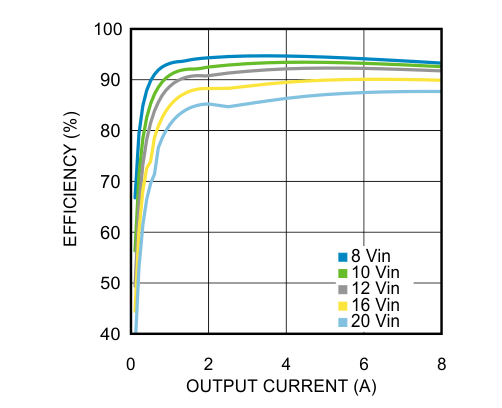
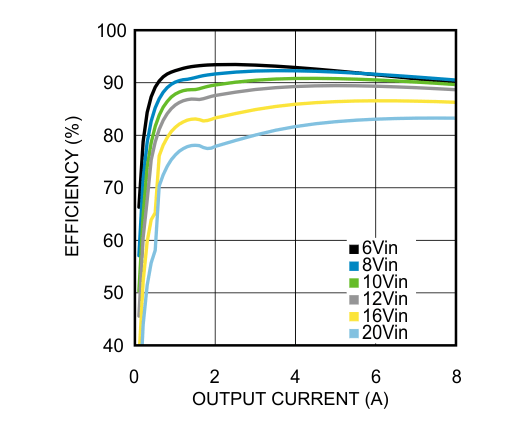

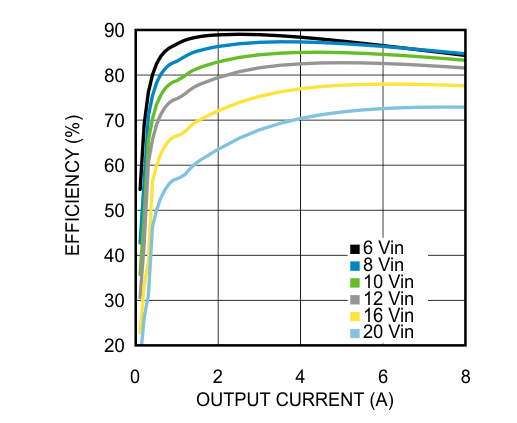
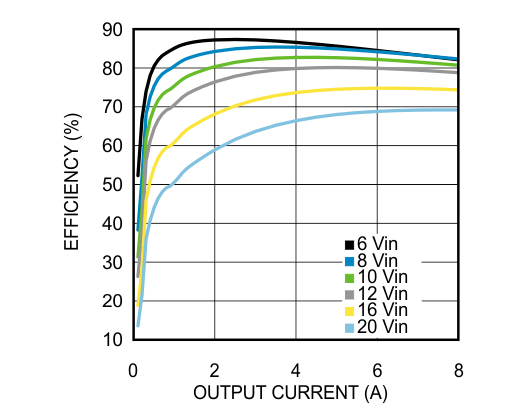
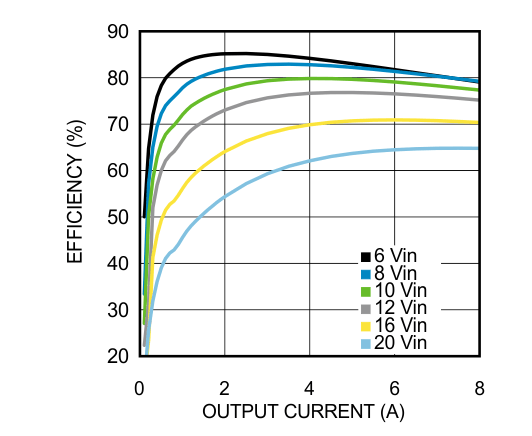
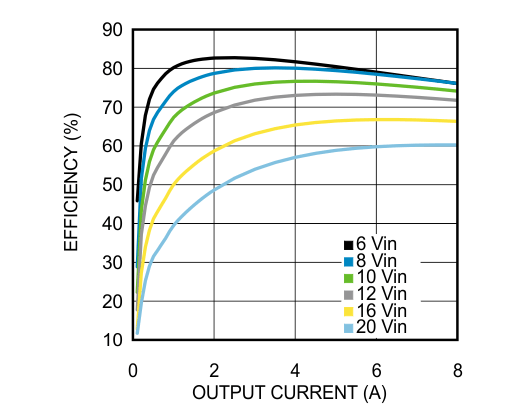
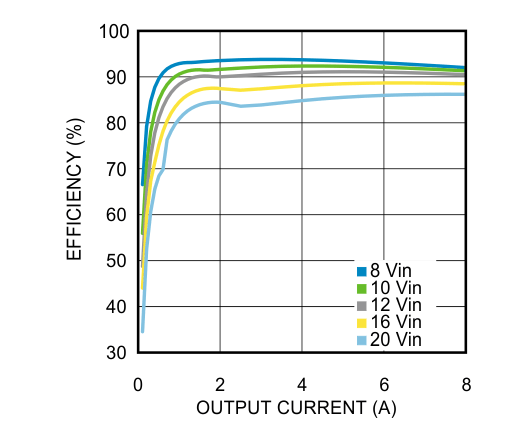
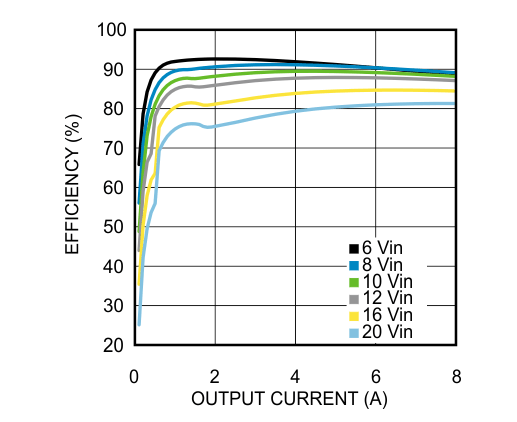
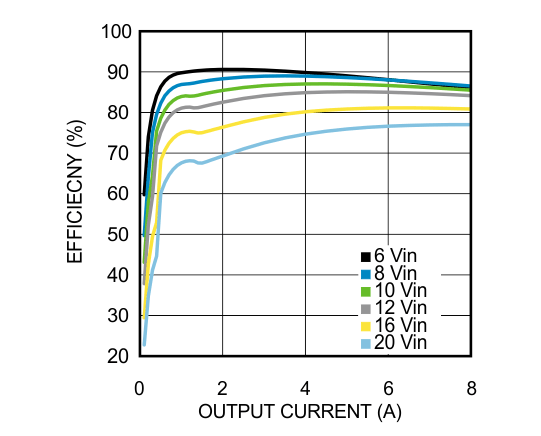
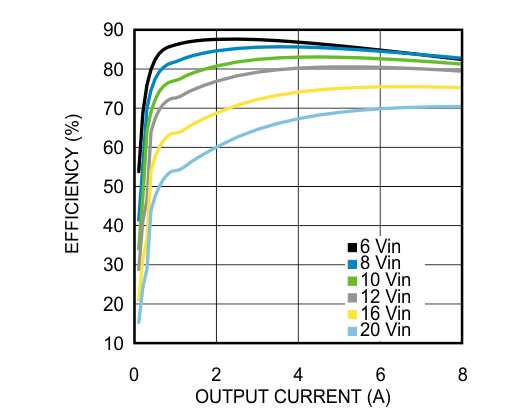
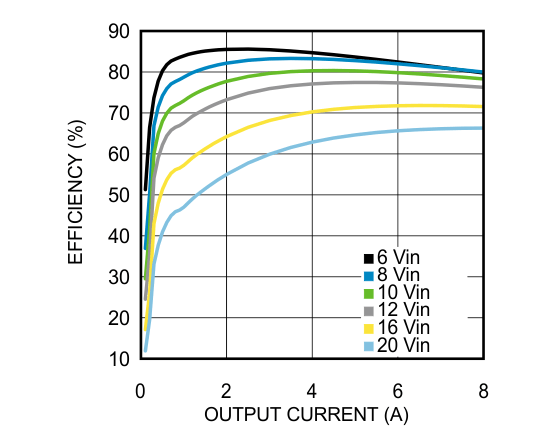
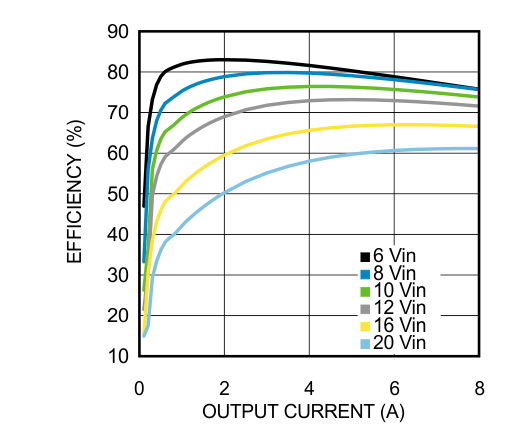
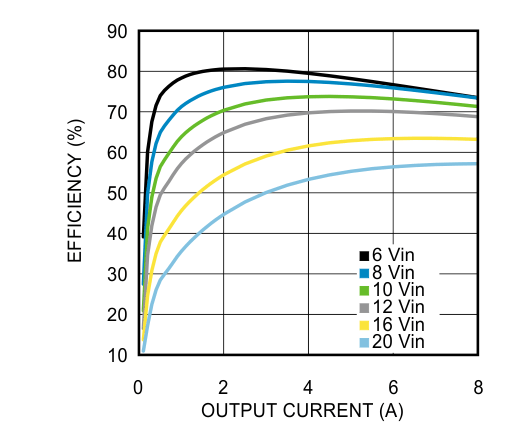
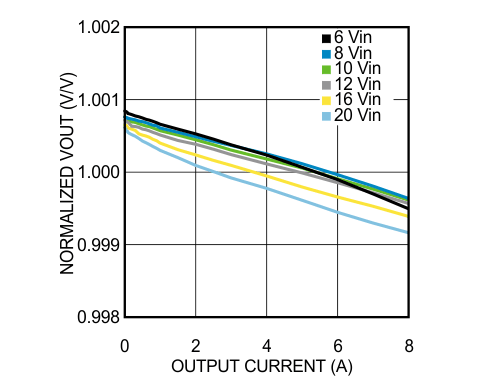
| VOUT = 3.3 V |
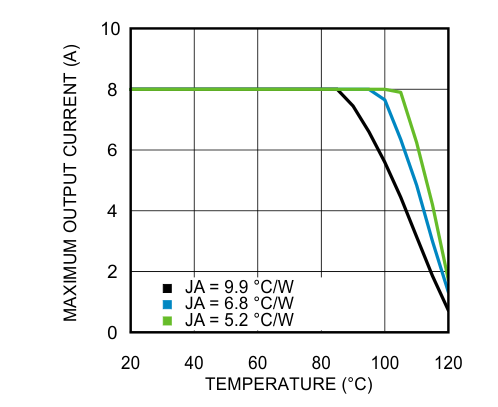
| VIN = 12 V, VOUT = 3.3 V |
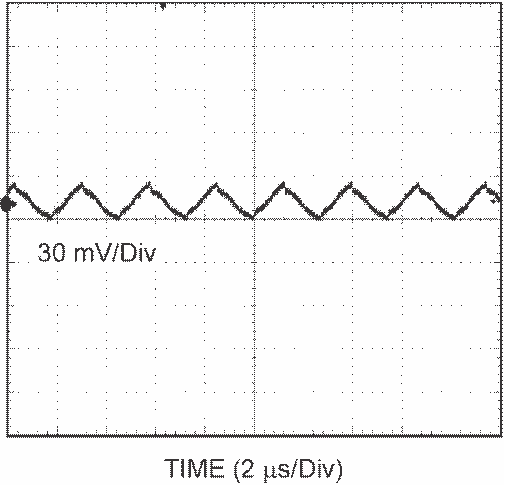
| 12 VIN, 5 VOUT at Full Load, BW = 20 MHz |
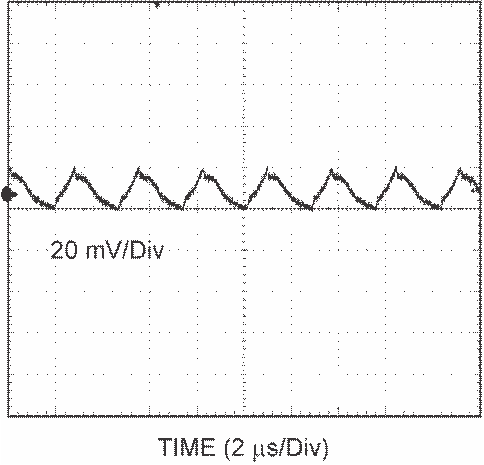
| 12 VIN, 3.3 VOUT at Full Load, BW = 20 MHz |
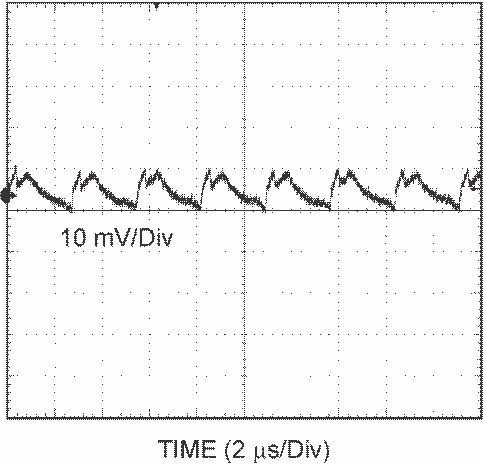
| 12 VIN, 1.2 VOUT at Full Load, BW = 20 MHz |
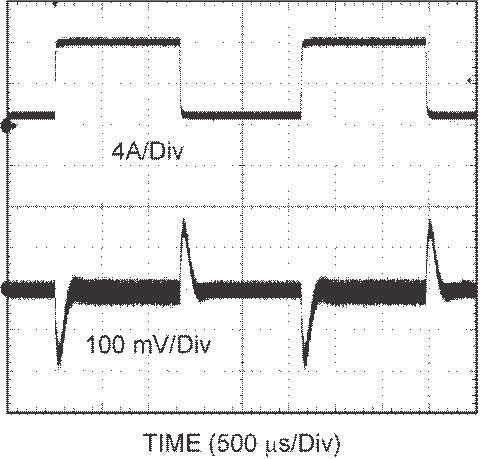
| 12 VIN, 5 VOUT, 1- to 8-A Step |
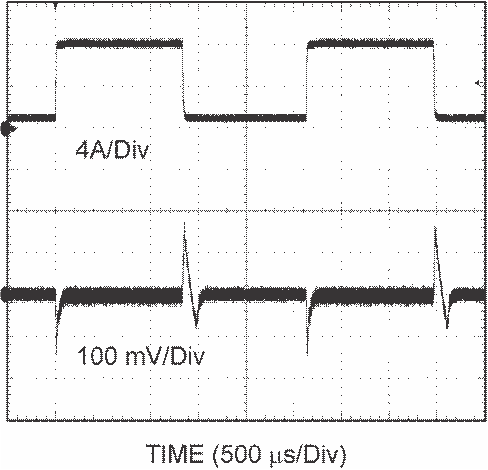
| 12 VIN, 1.2 VOUT, 1- to 8-A Step |
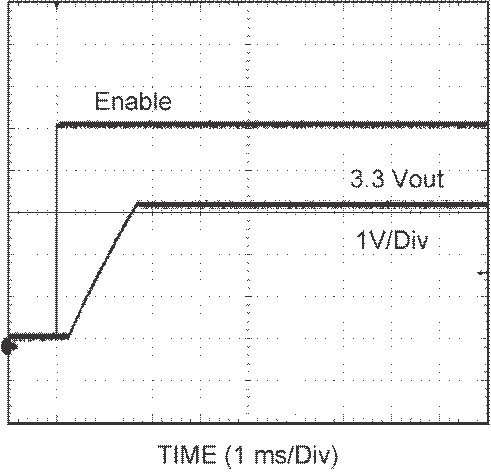
| No CSS |
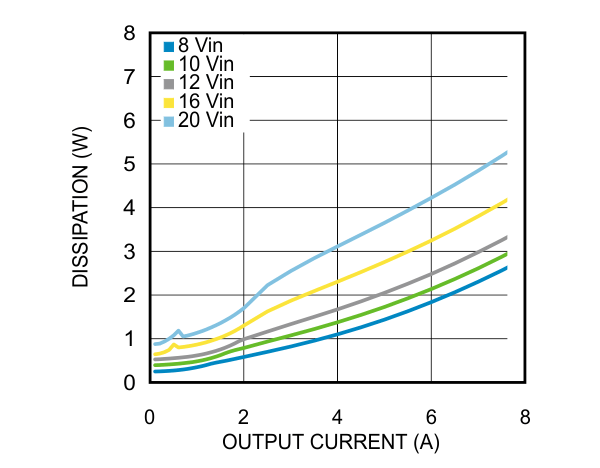
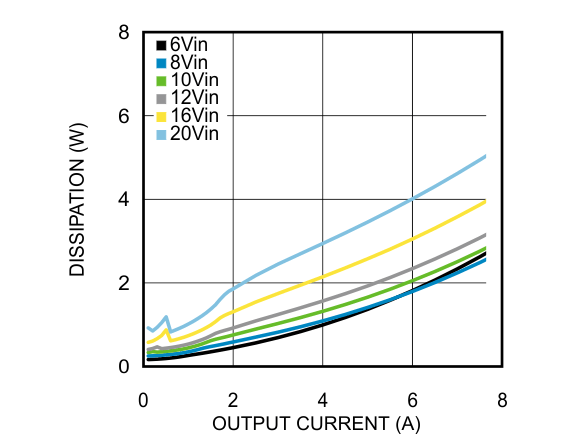
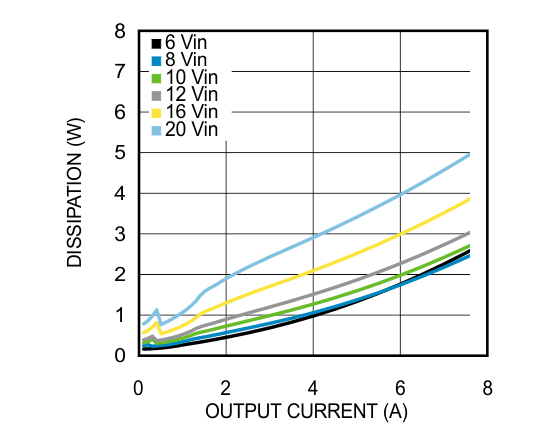
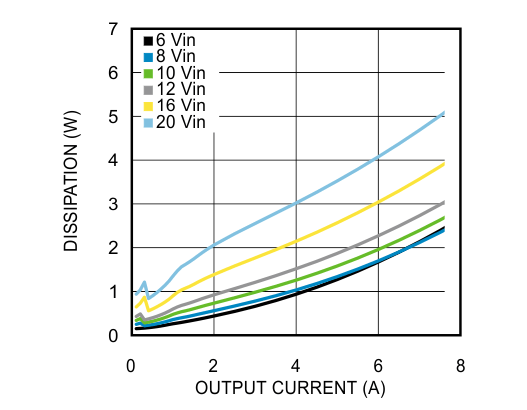
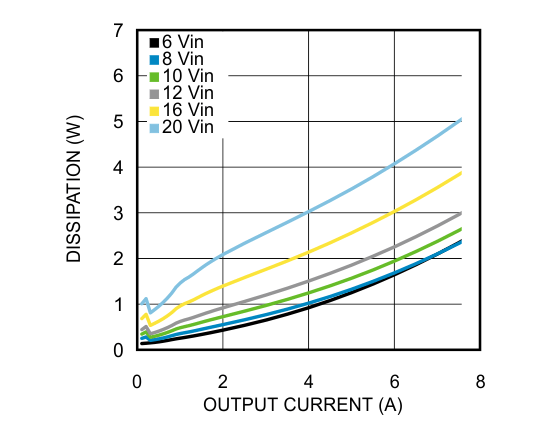
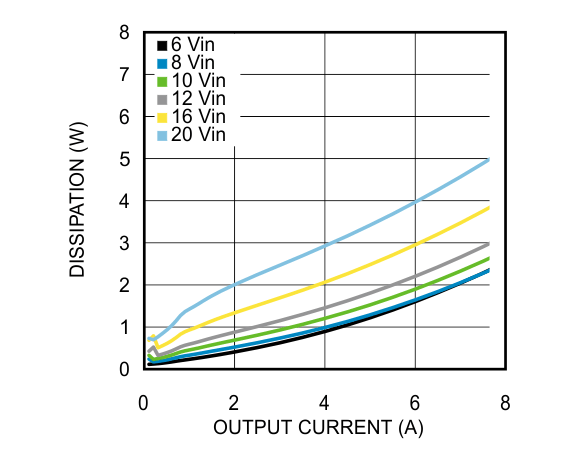
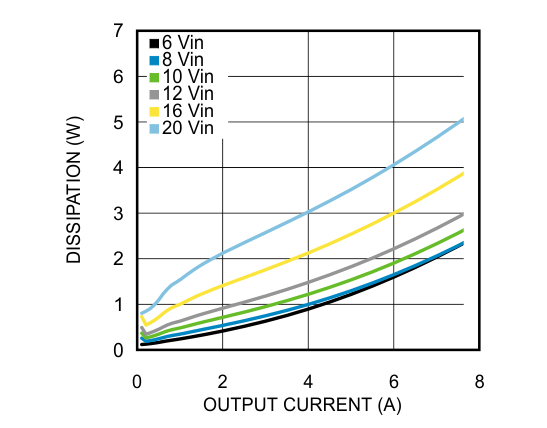
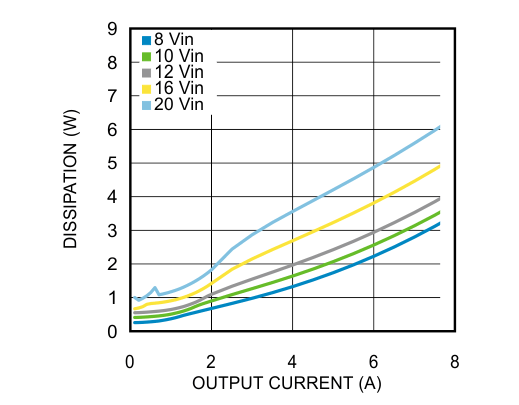
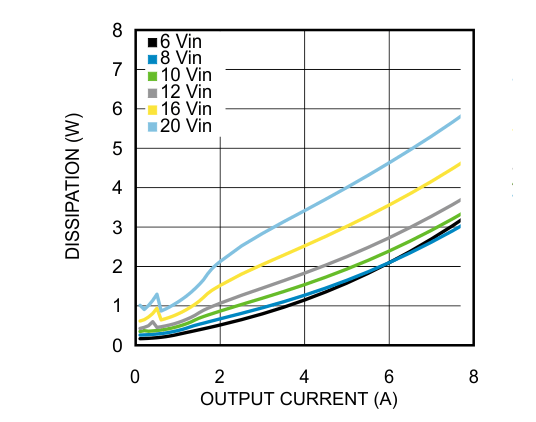
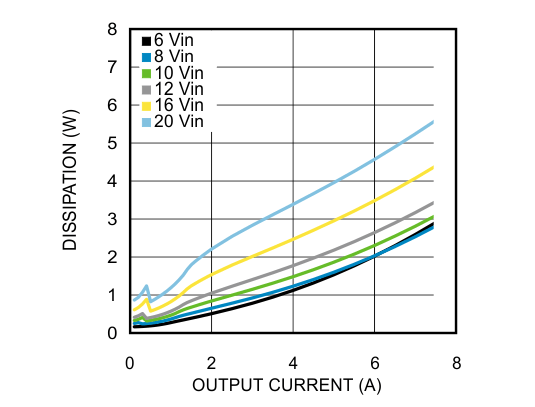
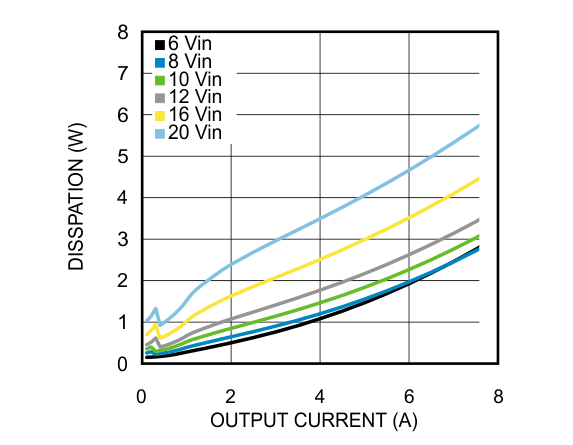
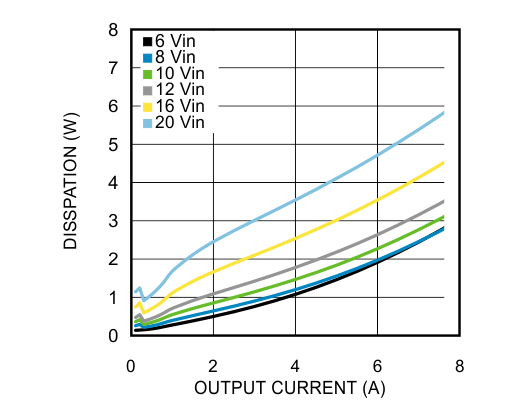
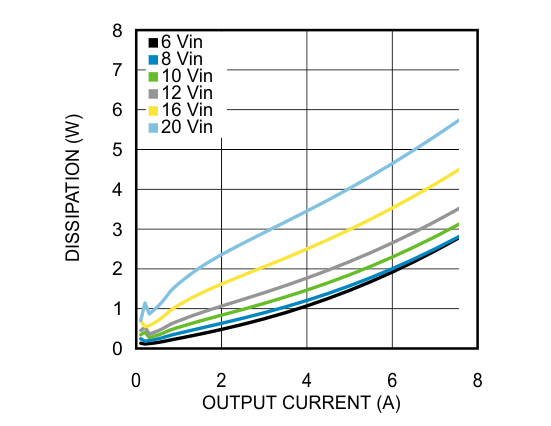
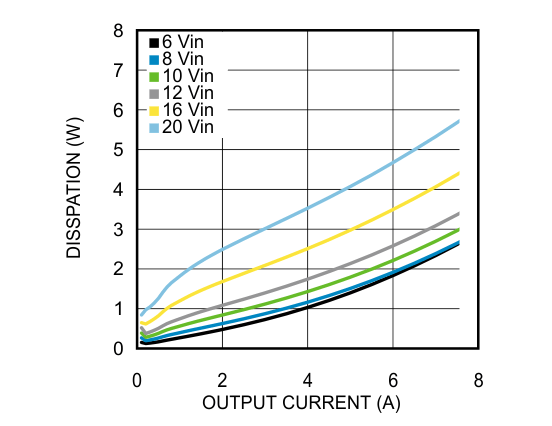
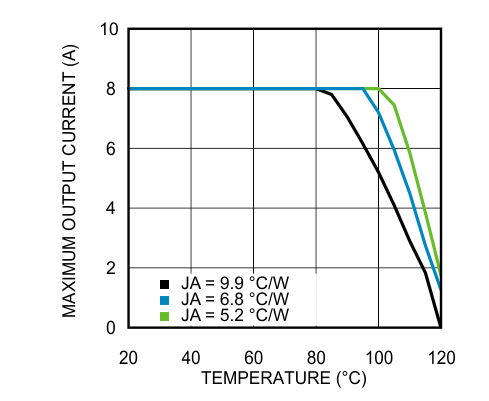
| VIN = 12 V, VOUT = 5 V |
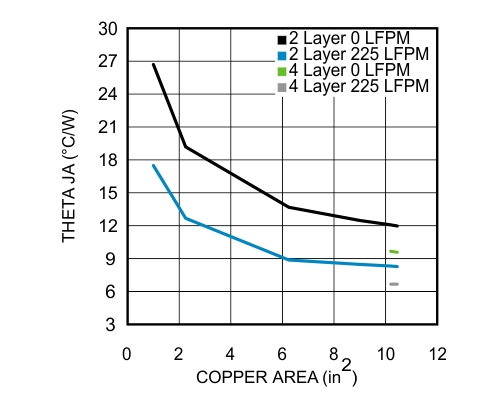
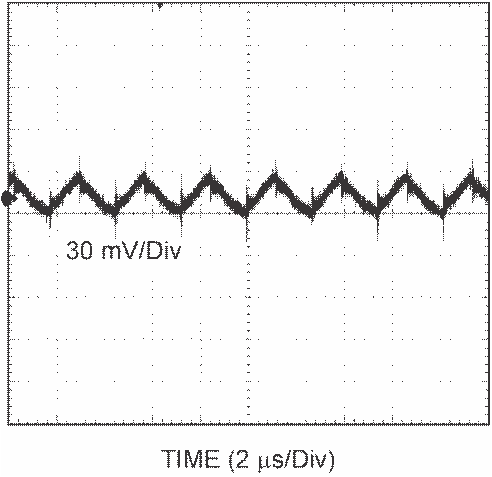
| 12 VIN, 5 VOUT at Full Load, BW = 250 MHz |
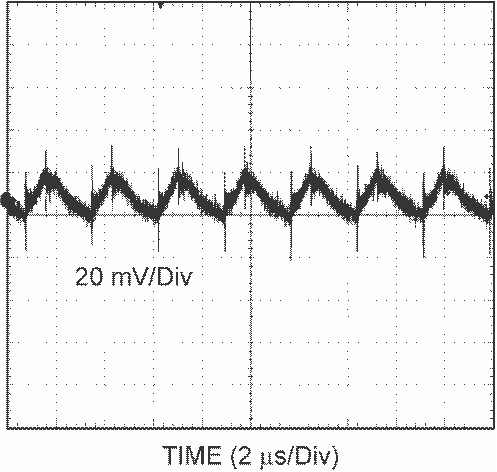
| 12 VIN, 3.3 VOUT at Full Load, BW = 250 MHz |
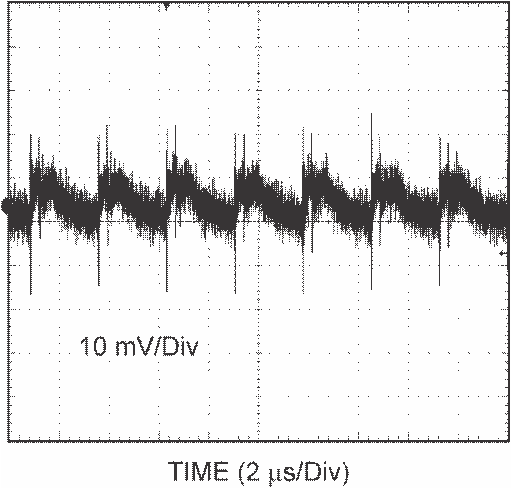
| 12 VIN, 1.2 VOUT at Full Load, BW = 250 MHz |
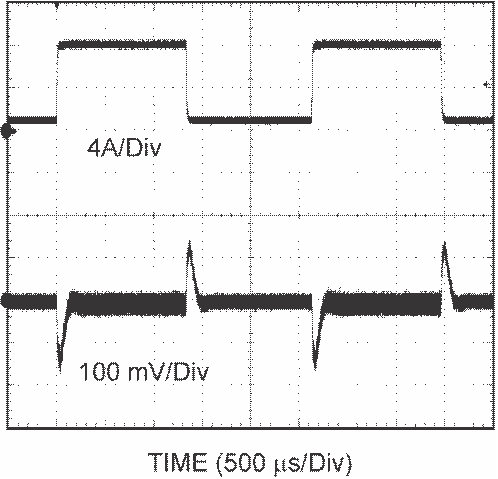
| 12 VIN, 3.3 VOUT, 1- to 8-A Step |
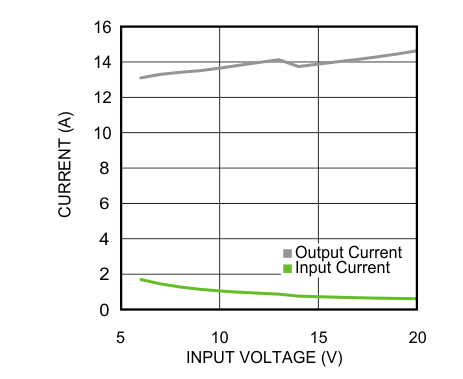
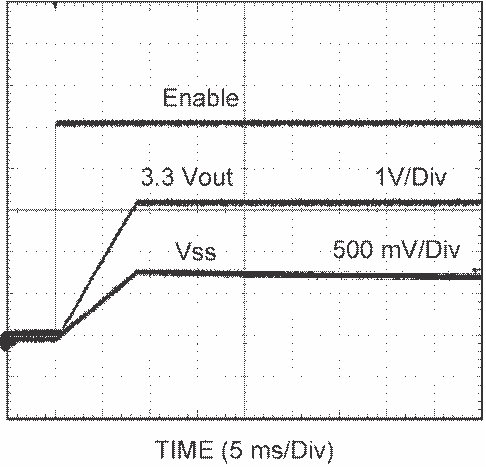
| CSS = 0.47 µF |